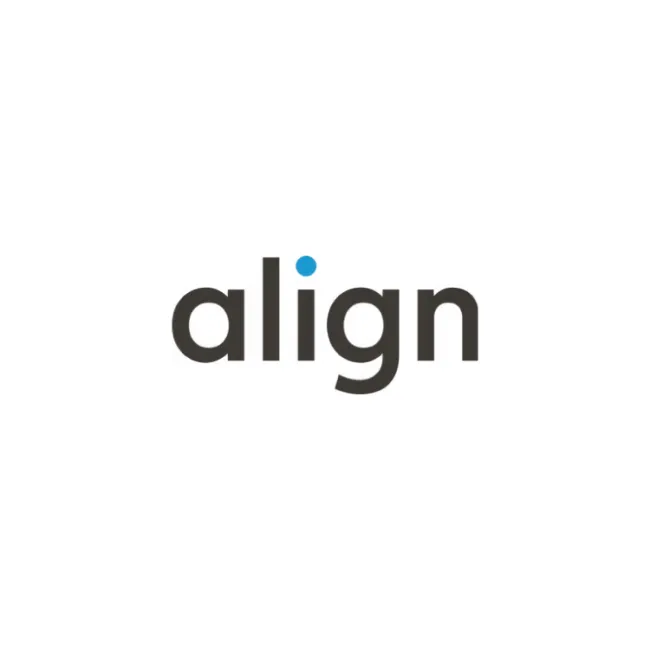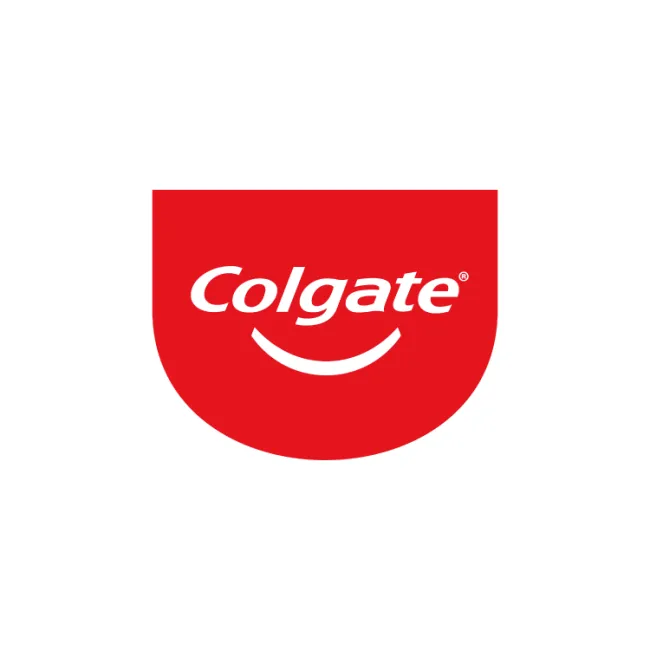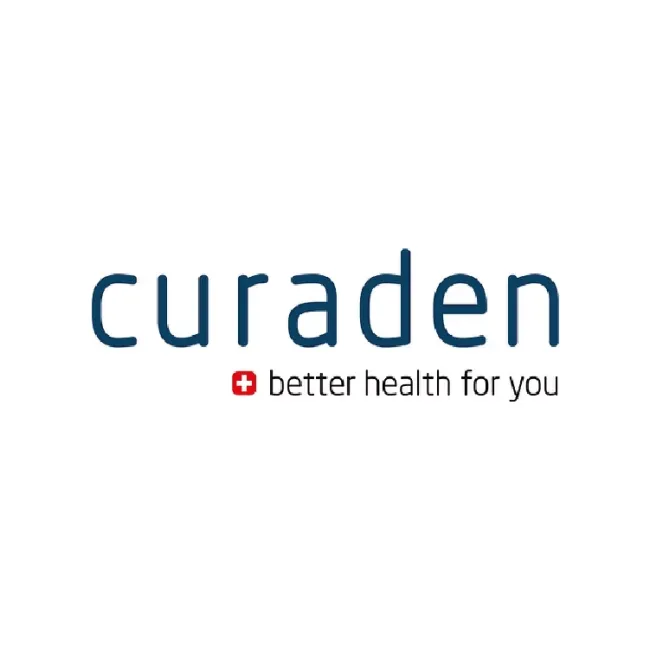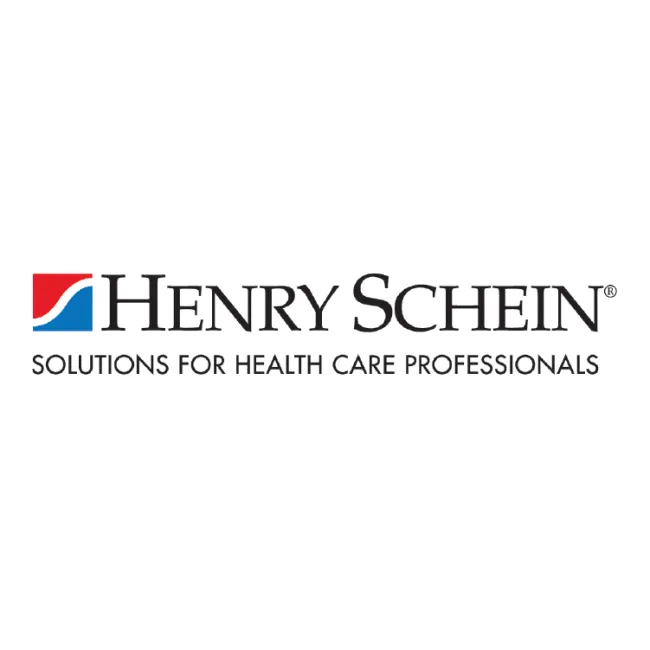Here are the winners of FDI-ERO Scientific Reward Competition winners of last year and their work.
- 1st Place: Yi-Ze Chen - Collaborative effort between public and dental professionals to promote sugarless lifestyle
Author: Yi-Ze Chen
Dental School: Universidad CEU San Pablo, Madrid, Spain
Year of Study: 5th
Contact details: chenyz0001@gmail.comIntroduction
Sugar, once considered a luxurious allure, has morphed into a pervasive public health crisis, significantly contributing to obesity and associated health concerns. Attributing this solely to individual dietary decisions, nonetheless, neglects the intricate interplay of historical, social, and economic factors that have shaped our present predicament. For millennia, cravings for sweetness were satisfied with natural sources of sweetness such as honey or maple syrup, which is strongly in contrast to the concentrated sugar prevalent nowadays. It wasn't until the 19th century that sugar consumption escalated, driven by its affordability and the need for readily available energy sources for undernourished industrial laborers and armed forces. Later, sugar seamlessly integrated into our daily dietary habits as our society shifted to be abundant in culinary offerings. Yet, with the advancing understanding of scientific knowledge comes our heightened awareness of the possible consequences of the profound implications of sugar, especially concerning oral hygiene. Emerging amidst the myriad of dietary approaches, a sugarless lifestyle presents a potential option for those seeking overall health improvements notably enhanced dental health. In the context of contemporary public health challenges, advocating a sugarless lifestyle becomes not only relevant but crucial, extending its reach beyond individual oral health to encompass comprehensive public health objectives.
Literature Review
High dietary sugar consumption wreaks havoc on oral health, contributing to detrimental conditions including tooth decay, gum disease, and enamel erosion. Dental caries, the most common non-communicable disease worldwide, exhibits a notably higher prevalence in individuals with frequent sugar consumption. This association is primarily attributed to bacteria in biofilms fermenting sugar into acidic byproducts and, subsequently, inducing the demineralization process of the dental hard tissues. The perturbation of the oral environment, characterized by the decline in pH levels and the elevation in saliva glucose concentrations, cultivates an altered microbial system with proportionally more acidic and carcinogenic biofilm species, consequently adding to demineralizing of dental tissues.
A study conducted by Kusama T et al. demonstrated a correlation between high ingestion of sugars and increased susceptibility to periodontal disease; meanwhile, raised sugar levels in saliva exacerbate the severity of existing periodontal concerns. Additionally, with the excessive consumption of sugar-sweetened beverages, greater probability of dental erosion are presented, wearing away the protective layer of dental tissues.
In regards with these compromises, dentists encounter a myriad of obstacles when providing treatments and managing patients who consume excessive sugar content. These patients experience a greater vulnerability to developing caries, often more susceptible to complicated and invasive dental interventions, while, on the other hand, interfering with current undergoing treatments. Moreover, controlling oral infections in individuals with sugar-rich diets presents significant challenges due to the compromised immune response and the potential for creating an optimal environment for the flourishment of infections, such as the colonization of Candida species. Furthermore, hyperglycemia is also correlated with the negative progression of periodontal diseases, thereby noticeably influencing the prognosis, and poses difficulties for dentists.
Research has shown that individuals who indulge in profuse amounts of sugar, particularly in the form of sugar-sweetened beverages, suffer an upsurge of gingival bleeding, gingivitis, and risk of periodontitis, as elevated blood glucose levels adversely affect the inflammatory response to dental plaques. Additionally, studies reveal impaired wound healing around the apex of teeth can be aggravated by hyperglycemia, and are remarkably observed in cases of chronic infection and inflammation persisting in jawbones. Another systematic review highlights that patients with unstable blood glucose levels endure higher rates of root canal-treated teeth being extracted, indicating lower life spans for these teeth. Dentists, therefore, are required to have heightened vigilance and additional considerations when treating such patients, both preoperative and postoperative, to minimize probable complications arising from impaired wound healing or secondary infections.
Finally, patients with a habitual pattern of sugar consumption are additionally predisposed to developing chronic and systemic disorders, including diabetes mellitus and obesity. Such conditions potentially escalate complications and challenges associated with dental treatments.
Innovative Section
Accordingly, advocating a sugarless lifestyle is undoubtedly compelling, yet it requires a fully comprehensive and holistic approach. Aiming at successfully promoting such a way of living and encouraging voluntary individual participation, a thorough strategy encompassing a spectrum of measures should be implemented. These measures involving education, community engagement, policy changes, and utilization of technology-driven solutions are designed to raise awareness, foster knowledge acquisition, establish supportive environments, while inspiring and encouraging individuals to embrace a sugar-free lifestyle.
Disseminating knowledge concerning the adverse health consequences associated with excessive sugar consumption is fundamental, and targeted awareness campaigns implemented across schools, workplaces, and communities serve as a critical first step for this endeavor. While raising awareness is essential, equipping individuals with the necessary skills to make informed dietary choices is crucial and paramount for long-term success. Interactive workshops, seminars, and online courses with real-life examples empower individuals to translate knowledge into action. By incorporating information on healthier alternatives and deciphering food labels to identify hidden sugars, these learning opportunities provide participants with the practical tackle needed to navigate the complexities of a healthy diet.
It is imperative to engender a culture of healthy eating within communities, and such can be accomplished by organizing engaging activities such as cooking workshops, farmers' markets, and communal gardens, with initiatives striving to cultivate an appreciation for unadulterated, fresh foods while nurturing the collective joy of preparing and savoring nutritious meals. The establishment of supportive online and offline networks will further enable individuals to exchange insights, recipes, and strategies for sustaining a sugar-conscious lifestyle.
Enacting compulsory strategies, such as sugar taxes, restrictions on advertising sugary products to children, and expanding access to affordable fruits and vegetables in underserved areas, along with supporting policy adjustments, is as crucial as it is shown to be effective in attenuating the amount and frequency of sugar consumed and creating a supportive environment conducive to healthy dietary decisions. Likewise, policies should be executed to have clear and unambiguous food labeling to display added sugar content prominently on packaging and simplify ingredient lists for easier understanding and informed decision-making.
To take a step further, national programs may be instituted by partnering with grocery stores and restaurants nationwide to implement subtle yet impactful strategies that encourage healthier options by having targeted discounts and promotions on better alternatives and food choices.
Leveraging the ubiquitous reach of digital technologies offers remarkable potential in promoting a sugar-free lifestyle. Considering the noteworthy influences of video platforms and social media, strategically collaborating with key opinion leaders and influencers, coupled with the utilization of engaging hashtags and challenges, can substantially elevate public awareness and encourage a cohesive community centered around healthy eating practices.
Moreover, the widespread usage of mobile devices unlocks innovative avenues for the promotion of healthier diets. Intriguing games focused on healthy cooking can subtly instill the principles of balanced nutrition through immersive virtual experiences. Transformative guidance and support can be provided with features for sugar-intake tracking, grocery shopping tools highlighting sugar content and suggesting healthier alternatives, and generating personalized shopping lists based on tailored sugar reduction goals.
Based on AI-powered algorithms and with access to daily, weekly, and monthly reviews, users are able to track their progress in sugar reduction, self-assess, receive customized suggestions, and have personalized goals to aid their improvements. Furthermore, the application should include incentivizing features like redeemable points, rewards, and leaderboards, offering discounts for healthy foods and beverages in restaurants and stores to motivate individuals in reducing sugar intake and adopting healthier habits in the long term.
In fact, the application, with the recorded diet, can function as synergistic tools for dental professionals. They facilitate the acquisition of dietary data from patients, enabling the formulation of personalized nutritional recommendations and forming collaborative goal setting between patients and dentists. This streamlines the often-cited challenges of time constraints and inadequate compensation for in-depth dietary assessments and counseling within the clinical setting.
By also working with food delivery platforms, including subscription boxes, to curate and deliver healthy, low-sugar ingredients, recipe cards, and prominently featuring sugar-free options with filtering capabilities according to sugar content, consumers can make informed dietary choices and cope with a sugar-free diet with greater ease.
Reducing sugar intake offers a multitude of benefits for oral health while also extending far beyond. By limiting sugar consumption, individuals can experience a range of positive outcomes that enhance both physical and mental well-being. The cornerstone benefit of improved oral health includes a significant reduction in the risk of various non-communicable oral diseases, such as cavities, periodontal disease, and enamel erosion, which translates to healthier smiles and potentially reduced dental expenses.
Moreover, it is strongly evident that sugar reduction plays a pivotal role in chronic disease prevention, lowering the likelihood of obesity, diabetes, cardiovascular diseases, and other conditions associated with excessive sugar intake. Beyond the physical realm, sugar reduction contributes to increased energy levels, as stable blood sugar levels promote improved focus and overall vigor.
Furthermore, embracing a sugarless diet can lead to enhanced intensity of sweetness perceived, as taste buds adjust to appreciate the natural sweetness of fruits and vegetables, potentially establishing a deeper connection with wholesome foods. Collectively, these benefits underscore the transformative power of reducing sugar intake, paving the way for a healthier, happier lifestyle.
In the journey towards promoting a sugarless lifestyle, dentists emerge as vanguards for change, armed with a wealth of expertise and a steadfast commitment to improving patient outcomes. Through patient education initiatives seamlessly woven into routine checkups, they illuminate the intricate link between sugar consumption and oral health, urging individuals to make healthier selections about their dietary habits.
With personalized guidance and a treasure trove of sugar-free alternatives, patients are to embark on a transformative journey towards healthier living. The power of telehealth consultations, thanks to technological advancement, additionally extends the positive impact on wider audiences, transcending geographical barriers to deliver essential education on the detrimental effects of excessive sugar intake.
Stepping beyond the confines of clinics, dentists embark on a journey of community outreach, forging strategic alliances with educational institutions, workplaces, and community centers to disseminate knowledge and create a culture of wellness. Finally, by virtue of their unparalleled expertise in the deleterious effects of sugar on oral health, dentists are demonstrably well-equipped to become stalwarts of sugar restriction policies at the state and local levels.
Their unstinting advocacy would undoubtedly bolster the legitimacy of these policies, potentially sparking widespread public adherence. Through collaborative efforts, they amplify their influence, providing individuals with the knowledge to make informed choices while elevating awareness and advocating for policy changes aimed at enhancing access to comprehensive dental care. By partnering with fellow healthcare professionals, nutritionists, and industry stakeholders, dentists form a formidable alliance, orchestrating a comprehensive approach to sugar reduction, driving transformative change towards a healthier, sugarless future.
Conclusion
The pervasive infiltration of sugar into modern diets casts a shadow over oral health, amplifying the risks of dental decay, gum disease, and enamel erosion. This silent threat demands a multi-pronged offensive, empowering individuals and mobilizing communities towards a sugar-free future.
Advocating for a sugarless lifestyle emerges as an imperative mandate that can be achieved through upstream, midstream, and downstream interventions, with approaches involving educational campaigns, community engagement endeavors, policy adjustments, and technological approaches, to illuminate the profound ramifications of elevated sugar intake on health, and, most importantly, empower individuals to make enlightened choices.
By collaborating with policymakers and stakeholders, systemic reforms can be advocated, and favorable environments for healthier dietary habits could be constructed. With dentists assuming a central role in catalyzing this transformative paradigm shift, dentistry's leading edge stands prepared, equipped with knowledge and collaborative tools to guide. Dentists can orchestrate community outreach, champion sugar reduction policies, and serve as the spearhead of a healthier, sugar-free tomorrow.
This dietary shift would empower individuals to not only protect their smiles but also unlock a cascade of health benefits, paving the way for a transformative future.
References:
- 2nd Place: Maide Nazlı Kaya - Beyond the Pages: Harnessing AI for Next-Generation Scientific Publishing
Name: Maide Nazlı Kaya
Dental school: Bulent Ecevit University,Zonguldak,Turkiye
Year of study: 4th
Contact details: maide.nazka@gmail.comIntroduction
Artificial Intelligence (AI) is the ability of machines to perform tasks that normally require human intelligence¹. The concept of AI can be traced back to 1950, but it has only become a practical tool in the last two decades¹. The rapid development of big data, computational power, and AI algorithms has enabled AI applications to provide convenience in various sectors, including dentistry¹.
Literature Review
Artificial Intelligence (AI) has been increasingly utilized in various aspects of the research publication process, aiming to improve efficiency, accuracy, and accessibility. Here are some ways AI has been used in this field:
Automated Literature Review: AI algorithms can be used to conduct literature reviews by analyzing vast amounts of research papers and extracting relevant information. This helps researchers identify existing studies, trends, and gaps in the literature more efficiently.²
Language Editing and Proofreading: AI-powered tools can assist researchers in proofreading and editing their manuscripts for grammar, style, and clarity. These tools use natural language processing (NLP) algorithms to provide suggestions for improvement, thereby enhancing the quality of publications.³
Plagiarism Detection: AI-based plagiarism detection software can scan manuscripts to identify any instances of plagiarism or content duplication. This ensures the originality and integrity of research publications.⁴
Journal Recommendation Systems: AI algorithms can analyze the content of a manuscript and recommend suitable journals for publication based on factors such as topic relevance, impact factor, and audience.⁵
Automated Peer Review: While still in its infancy, AI-driven systems are being developed to assist in the peer review process by providing initial assessments of manuscripts. These systems analyze the quality, significance, and validity of research submissions, helping editors and reviewers in the decision-making process.⁶
Semantic Scholar: Semantic Scholar is an AI-powered academic search engine that helps researchers discover relevant papers based on their content. It utilizes machine learning algorithms to understand the context and meaning of research articles, providing more accurate search results.⁷
Reference Management Tools: AI-driven reference management tools assist researchers in organizing and managing citations more effectively. These tools can automatically extract citation information from PDFs, suggest relevant references, and format citations according to various citation styles.⁸
Data Extraction and Analysis: AI techniques such as text mining and data mining are used to extract insights from large datasets, enabling researchers to analyze trends, patterns, and correlations in research publications.⁹
These are just a few examples of how AI is being used to enhance the research publication process. As technology continues to advance, we can expect further innovations and developments in this field, ultimately improving the quality and accessibility of scientific publications.Innovative Section
As Artificial Intelligence (AI) continues to advance, its potential to revolutionize scientific publishing and further research goals becomes increasingly evident. While AI has already made significant strides in streamlining various aspects of the publication process, there remain opportunities for innovation to address current challenges and enhance efficiency. Below, we discuss potential avenues for leveraging AI to overcome obstacles in scientific publishing and achieve broader research objectives.
1. Enhancing Peer Review with AI-driven Insights
Obstacle: Traditional peer review processes can be time-consuming, subjective, and prone to bias, leading to delays in publication and potential oversight of valuable research.
Innovative Solution: AI-powered systems can assist in peer review by providing objective insights into the quality and significance of manuscripts. Advanced algorithms can analyze not only the content but also citation networks, author reputation, and historical reviewer feedback to offer comprehensive assessments. This can make peer review more efficient, transparent, and rigorous.
2. Facilitating Reproducibility and Transparency
Obstacle: Ensuring the availability of data, code, and methodologies for reproducibility can be challenging and labor-intensive.
Innovative Solution: AI tools can automate the documentation and sharing of research protocols, data, and code, thereby promoting reproducibility and transparency. AI-driven platforms can enable researchers to easily upload, annotate, and link data and code to relevant publications.
3. Personalized Recommendations and Access to Knowledge
Obstacle: Navigating the vast landscape of scientific literature can be daunting, especially for researchers outside specific domains.
Innovative Solution: AI-powered recommendation systems can personalize access to scientific literature based on research interests, citation patterns, and reading behavior. AI-driven summarization can condense complex research articles for easier comprehension.
4. Addressing Bias and Diversity in Publishing
Obstacle: Bias can affect various stages of the publication process, leading to underrepresentation of certain demographics and topics.
Innovative Solution: AI algorithms can be trained to detect and reduce bias by analyzing publication data, reviewer behavior, and editorial decisions. Diversity-aware AI models can help promote inclusivity and identify underrepresented research areas.
5. Automated Data Analysis and Interpretation
Obstacle: Analyzing large volumes of data is time-consuming and can introduce interpretation biases.
Innovative Solution: AI can automate data analysis, uncover patterns, and generate hypotheses, helping researchers validate results more rigorously and efficiently.
6. Predictive Analytics for Research Impact
Obstacle: Assessing research impact is difficult, especially in emerging fields where traditional metrics fall short.
Innovative Solution: AI can forecast research impact by analyzing citation networks, media mentions, and collaborations. Predictive analytics can inform decisions, guide funding, and identify key trends.
7. Streamlined Collaboration and Knowledge Sharing
Obstacle: Collaboration and information sharing across platforms can be inefficient.
Innovative Solution: AI collaboration platforms can integrate semantic search, recommend partners, and overcome language barriers with automated translation, promoting global scientific engagement.
8. Enhanced Peer Review with AI-Assisted Assessment
Obstacle: Human reviewers can be biased or inconsistent.
Innovative Solution: AI-assisted systems can flag methodological flaws, ethical concerns, and provide objective assessments. Sentiment analysis can also gauge the overall reception of manuscripts and suggest improvements.By addressing these obstacles and leveraging AI-driven solutions, researchers and publishers can enhance the efficiency, transparency, and impact of scientific publishing, advancing research goals and innovation in the academic community.
Conclusion
This literature review highlights the transformative potential of AI in advancing the quality, efficiency, and accessibility of research publications. By leveraging AI technologies for literature review, data analysis, content generation, and dissemination, researchers can accelerate scientific discovery and innovation. However, addressing the challenges associated with AI implementation is crucial to realizing its full potential.
In conclusion, AI holds immense potential to drive innovation in scientific publishing. By adopting AI-driven solutions, publishers, researchers, and stakeholders can collaborate to create a more efficient, transparent, and inclusive scholarly ecosystem, ultimately accelerating scientific progress and knowledge dissemination.References:
- 3rd Place: Adrian-Cosmin Pop - Oral health related to general health: A mobile app to support treatment for patients suffering from periodontal disease
Name of Author: Adrian-Cosmin Pop
University: University of Medicine and Pharmacy Cluj-Napoca, Romania
Grade: 5th
Contact Details: popadicosmin71@gmail.comIntroduction
The mechanisms linking oral infections, such as periodontal disease, and systemic diseases are not yet clear, but enough studies are showing a high correlation between the two. This is the case, for the endocrine system, especially for diabetes and rheumatoid arthritis, cardiovascular diseases, such as atherosclerosis, increased risk of infants presenting low weight at birth, sepsis, or being born pre-term due to periodontal disease of the mother, as well as cognitive impairment, and susceptibility to oral cancers (1).
Literature Review
The most accepted mechanism linking oral health to general health is the deterioration of the oral microbiome, also known as oral dysbiosis. The oral microbiome mainly consists of commensals, more than 2000 species of bacteria, fungi, viruses, and archaea, but there are also species labeled as opportunistic pathobionts. Oral dysbiosis occurs when opportunistic pathobionts rise in number, turning the commensal-pathobionts ratio in their favor (2). Regarding pregnancy, the generally accepted mechanism of pregnant women developing periodontitis is the increased hormone levels of progesterone and estrogen during pregnancy, which make periodontium more vulnerable to dental plaque, mainly due to the increased vascularity of the tissues, resulting in higher chances of developing periodontal disease (3). This sensitivity puts the baby at risk, studies show that pregnant women who develop periodontitis during pregnancy have a higher risk of giving birth to premature, low-weight children (4). The prevalence of periodontitis developed during pregnancy varies. One meta-analysis found that, among 20 studies, the prevalence of periodontitis in pregnant women was 40% (5). Another study found that 63% of the enrolled mothers developed periodontal disease during pregnancy, out of which 18% developed a severe form of this disease. Periodontitis was diagnosed at an average of 26.5 weeks of pregnancy time. This study found that women with periodontal disease had an 11 times higher chance of giving birth to children suffering from growth restriction than those not suffering from periodontal disease (6). Patients suffering from periodontitis develop endothelial dysfunction, a greater thickness of the carotid intima-media, and are more likely to develop a first coronary, as well as a first cerebrovascular event compared to patients not suffering from periodontal disease (7, 8). Moreover, people diagnosed with periodontitis have a higher risk of developing atrial fibrillation (9). Regarding intervention, several studies have shown that people who brushed twice a day, increased dental visits, and received a non-surgical, first-step, treatment, had a lower risk of developing cardiovascular diseases than those who did not. To continue, there is strong evidence of the presence of Porphyromonas gingivalis and Aggregatibacter Actinomycetemcomitans in samples collected from atheroma lesions, bacteria well-known to be periodontal pathogens (10). These 2 bacteria have also been shown to play an important role in auto-antibody formation in the case of patients susceptible to rheumatoid arthritis (11). The Consensus Report on periodontitis and cardiovascular diseases clearly states that patients suffering from periodontitis should be warned that they are at a higher risk of developing cardiovascular diseases (8). One meta-analysis draws attention to the link between periodontitis, dementia, and cognitive impairment. They concluded that individuals suffering from periodontal disease had an increase of 77% in cognitive impairment compared to healthy individuals. Also, individuals not suffering from periodontitis were 2.13 times less likely to suffer from dementia, compared to people with moderate or severe periodontitis (11). Regarding diabetes, studies show that hyperglycemia correlates with the severity of periodontitis, impacting the quality of life of these patients. People suffering from diabetes are at a major risk of developing periodontitis, and patients suffering from periodontitis are less likely to control their sugar levels due to the disease (12). Periodontitis is currently affecting >40% of adults in the United States, and it is one of the many diseases in which prevalence increases with age (13). As demographics show visible aging in the population (14), we can only expect these numbers to rise in the future. Only in the UK, it is estimated that stopping the current cases of periodontitis from developing could save 5.5 billion euros in the following 10 years. Being a resident of Romania, I looked up some statistics about my country and the National Institute of Statistics shows that in 2018, only 1 in 5 adults visited the dentist. In the treatment of periodontitis, according to the latest guide of treatment (2020), the first step of the treatment consists of non-surgical treatment, including the education and motivation of the patient in developing good oral hygiene, otherwise, the treatment cannot proceed. Informative and motivational sessions should be held by the dentist together with the patient suffering from periodontitis in order to assure that. This might be the most difficult part of the treatment, because it is patient-dependant, and, in many cases, poor oral hygiene has led the patient to develop periodontal diseases. It is also time costly for dentists and patients can be reluctant to achieve good oral hygiene.
Innovative Section
Here comes our solution, STARTBrushing, a mobile app designed to educate patients suffering from periodontitis. This app provides video-audio guides on how to perform a proven-effective brushing technique (Bass-modified technique), together with guides on how to use dental floss and interdental brushes. Our app strives to solve this problem using psychologically-proven mechanisms (the Theory of Planned Behaviour (15)) to achieve the behavior of brushing, and ultimately, good oral hygiene. Firstly, we are creating the means necessary for the patient to develop good oral hygiene. This is achieved via daily reminders to brush twice a day, which encapsulate positive reinforcement techniques, positive feedback for brushing, tops with the users’ friends as well as educational content. Secondly, we need to make sure that this behavior is mentained as a patient that develops periodontal disease needs to remain under supervision for the rest of his life. This is achieved via in-app rewards and gamification. Moreover, this app also provides personalized statistics, progress check that can be done both by the patient and by the periodontologist, to know when to best intervene. Patients are reminded of their dental consults, in correlation to the dentist’s plan of treatment. The second innovative part involves public health systems. As more and more research show strong evidence regarding consequences of poor oral health on general health, communication between dentists and doctors of general medicine should be strengthened, especially in the case of patients suffering from oral cancer, cardiovascular disease, diabetes, and women during pregnancy. This could be achieved with an additional form given by the general doctors to these patients. This form should assess the periodontal status of each patient, as they should be referred to a dentist/periodontologist and this assessment should be done during their general treatment to ensure the best results. Dentists and general doctors should communicate and inform each other regarding the status of their patients.
Conclusion
In conclusion, demographics show aging in the population, and doctors should only expect the prevalence of diseases to rise. To solve this problem, we should be focusing on prevention and the 2 solutions I am proposing could reduce periodontitis-related complications, strengthen the relationship between dentists and general medicine doctors, as well as ensure a higher quality of life for patients suffering from periodontal disease.
References:




